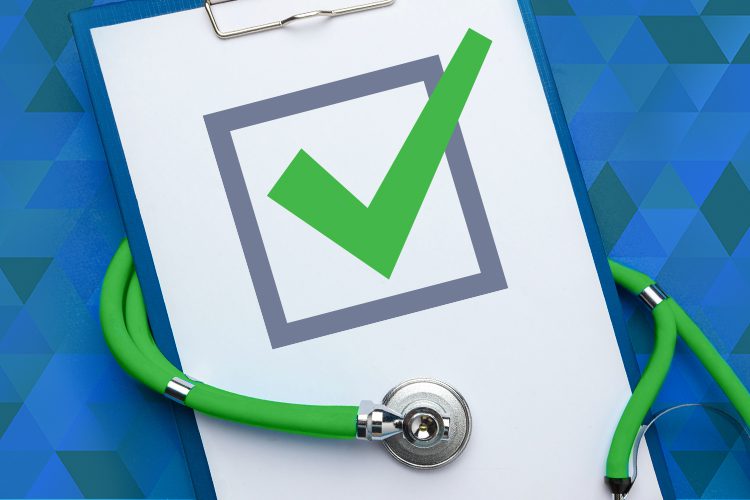Factors That can Affect RCM
Of the 400+ billing audits the healthcare revenue cycle management experts from Experity have performed, most clinics were confident in their ability to get claims out and post cash efficiently. And while they were right, those tasks only account for about 30% to 40% of the revenue cycle. By mistaking RCM for just billing, they were blind to numerous gaps that were delaying payment.
Full revenue cycle management covers all the steps that your staff and patients take that lead to you getting paid. Because front desk staff plays such a pivotal role in RCM, a lot of the challenges in this process are tied to them. However, there are also several things that are within the manager’s control, and some things that are not within anyone’s control, but it is the manager’s responsibility to troubleshoot. Here are some common roadblocks in RCM.
High staff turnover: It takes time to get any process running as perfectly as possible, so when you frequently have to train new people or are running a lean team, it can be very difficult to maintain a healthy RCM.
Failure to implement or execute SOPs: Certainly something that helps with the high turnover problem, clear SOPs and the expectation to follow them can minimize mistakes and missteps that hurt revenue cycle management . EVERY clinic should have them.
Lack of follow-up: We see many clinics whose front desk staff does a fantastic job with much of the rev cycle, but drops the ball when it comes to following up on collections. If you do not follow up, you likely will not get paid. Period.
Inconsistent or incomplete reporting: Your metrics tell you the story about how well you’re doing. If you’re not pulling numbers on a regular basis, it will be much harder to identify problems and causality. See the next section for help with KPIs.
Contracting and credentialing: Aside from follow-up on collections, this is one of the biggest roadblocks to getting paid. We have a section dedicated to this topic below.
How to Get the Best ROI With RCM
Measuring your KPIs will help you see where to improve, but they don’t tell you how. Here are some actionable tips that our experts recommend to help your staff optimize the full revenue cycle.
Preregistration and Registration
Registration and eligibility errors are the single biggest reason for exceptions. This is a great place to start when you’re optimizing your process. Offering patients the ability to preregister online will not only save precious time for your staff but also help reduce data input errors. Once the patient is at the clinic, your staff can also utilize insurance eligibility features like Real Time Eligibility (RTE) or Real Time Verification (RTV). This will tell you immediately if the patient’s insurance coverage includes the service. Most importantly, your staff needs to have an action plan for when RTE or RTV shows that the patient is not covered. Coach your staff to either ask for a credit card or set up a payment plan.
Charge Capture and Coding
When the American Medical Association came out with new coding guidelines for COVID-19 in 2021, it was the first time in 25 years providers have had to learn new codes — and keep up with frequent changes to them. The best way to ensure that your coding is always accurate is to provide ongoing training. Experity is diligent about offering webinars and other resources to help clarify what medical services translate to which billable charges:
This blog is regularly updated to reflect the most recent E/M codes for COVID-19.
This downloadable PDF simplifies the information in the above blog.
This on-demand webinar talks through some of the most confusing coding situations related to COVID-19.
Claim Submission
If your front desk is doing thorough work on the front end, and your providers are documenting accurately, your claims will already be cleaner. To further perfect the process, identify the most common mistakes made when submitting claims, and build best practices around identifying these mistakes and correcting them before submitting the claims.
Insurance Follow-up
This is often considered the dirty work of healthcare revenue cycle management RCM. If you want to get paid, you need to have a protocol to call or submit an online inquiry to insurance companies for payments. We recommend that for each payer, you establish a cadence to follow-up every 30-45 days. Reserve time to do this follow-up and set separate cadences for each payer — you don’t want to get backlogged on work by contacting everyone on the same day every month.
Patient Collections
This is another difficult area for many clinics because few people like to ask patients for money. Two things you can do to be better about this are A) find out which staff is most comfortable doing this, and B) coach them with a script so they know how to go about it. For example:
“Hi, how are you – sorry you’re not feeling well. Ok Let’s see. You have a $25 dollar copay. Want to give me your credit card and I’ll take care of it? Oh! I see from the last time you were here, you owe $10. Is it OK if I just go ahead and put that on here as well?”
BONUS TIP: Use credit card on file to eliminate clunky processes. With a stored credit card, you just need permission from the patients to use that card for balances owed, circumventing extra conversations.
Get more tips on RCM SOP best practices in this urgent care billing optimization blog >>








